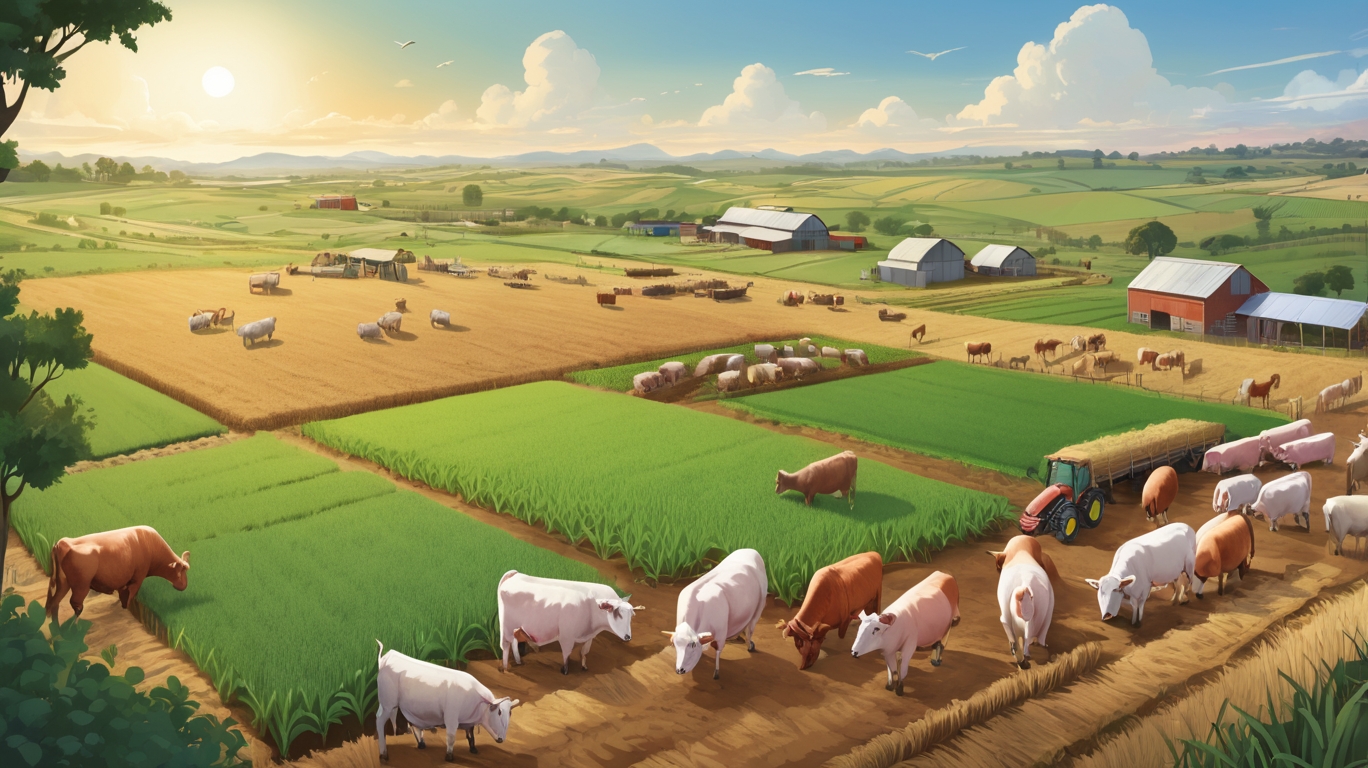The Benefits of Integrating Livestock with Crop Farming
In today’s agricultural landscape, farmers and landowners are increasingly exploring sustainable methods to improve productivity while nurturing the land. One such approach is integrated crop-livestock farming, a practice that harmoniously combines raising animals with growing crops. This method isn’t new—many traditional farming systems have relied on it for centuries—but its benefits are being rediscovered in modern agriculture.
By thoughtfully integrating livestock with crop production, farmers can create a more resilient, efficient, and ecologically balanced system. Let’s explore some of the key advantages of this approach.

1. Enhanced Soil Fertility
Livestock, particularly grazing animals like cattle, sheep, and goats, contribute to soil health through natural fertilization. Manure adds essential nutrients such as nitrogen, phosphorus, and potassium back into the soil, reducing the need for synthetic fertilizers. Additionally, the trampling and grazing actions of animals help incorporate organic matter into the earth, improving soil structure and water retention.
2. Natural Weed and Pest Control
Grazing animals can help manage weeds and pests without relying heavily on chemical herbicides. Chickens, for example, forage for insects and weed seeds, while sheep and goats can be used to control invasive plant species. This not only reduces input costs but also supports a more balanced ecosystem.
3. Diversified Income Streams
Relying solely on crops or livestock can be financially risky, especially with fluctuating market prices and unpredictable weather. Integrating both provides multiple revenue sources—whether from selling grains, vegetables, milk, meat, or wool. This diversification can stabilize farm income and reduce economic vulnerability.
4. Improved Land Use Efficiency
Crop residues, such as straw and corn stalks, can be used as livestock feed, while cover crops like clover or alfalfa provide high-quality forage. This reduces waste and maximizes the productivity of every acre. In return, the animals’ manure enriches the fields, creating a closed-loop system that minimizes external inputs.
5. Reduced Environmental Impact
Integrated farming promotes sustainability by lowering greenhouse gas emissions compared to conventional monoculture systems. Rotational grazing prevents overgrazing and soil degradation, while diverse cropping systems enhance biodiversity. The result is a farming model that works with nature rather than against it.
6. Resilience to Climate Variability
Mixed farming systems tend to be more adaptable to extreme weather conditions. If a drought affects crop yields, livestock can still provide income. Conversely, if forage is scarce, crop byproducts can supplement animal feed. This flexibility makes farms more resilient in the face of climate uncertainty.
7. Stronger Farm Ecosystems
When crops and livestock coexist, they create a more dynamic and self-sustaining environment. Beneficial insects, microorganisms, and wildlife thrive in these systems, contributing to pollination, pest control, and overall ecological health.
Final Thoughts
Integrating livestock with crop farming is not just a return to traditional methods—it’s a forward-thinking approach that aligns with modern sustainability goals. By fostering natural cycles, reducing waste, and enhancing productivity, this system offers a balanced way to farm that benefits both the land and the farmer.
For those considering this method, starting small—perhaps with a few grazing animals or a trial cover crop—can be a practical first step. Over time, the synergy between crops and livestock can lead to a more prosperous and sustainable farm.
Would you consider integrating livestock into your farming system? Share your thoughts in the comments below.